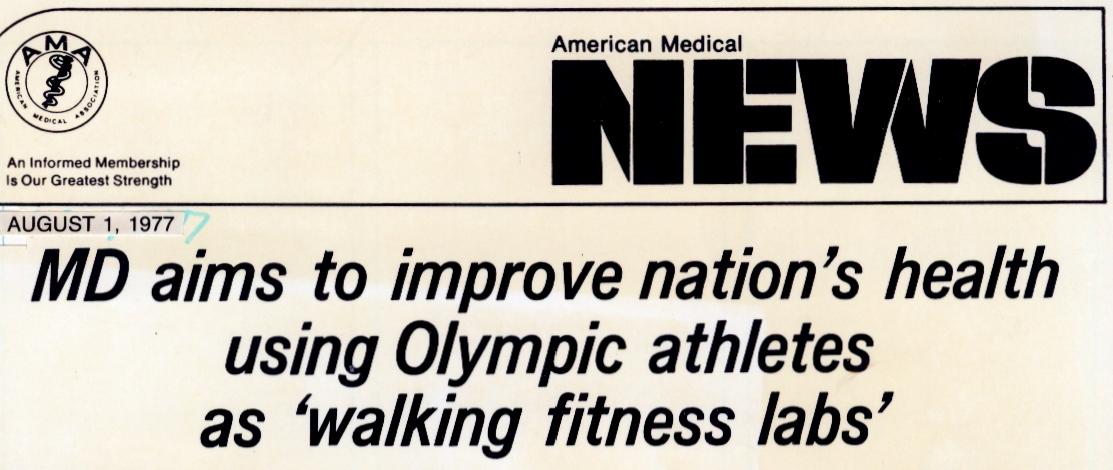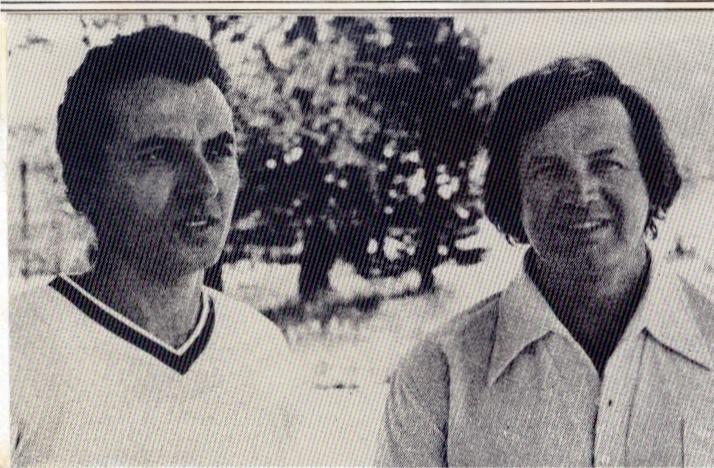| Index | Next |
![]()
Vascular surgeon Dardik (left) and computer scientist Ariel are collaborating at the Squaw Valley Sports Medicine Center to learn more about physical fitness using unique specimens-Olympic athletes.
When Irving Dardik, MD, was a college kid in the mid Fifties, he was not only captain of the track team at th U. of Pennsylvania, but also a top-notch sprinter.
He almost made it to the 1956 Olympics in Melbourne in the 400-meter dash, and planned to try again the next time around, at the 1960 Rome Games.
But in 1958 he entered medical school, and that ended his dream of competing in the Olympics. "In those days, you couldn't just leave medical school for something like that," he says.
So instead of achieving fame as a quarter-miler, he achieved fame as a Vascular surgeon. With his brother Herbert and Ibrahim Ibrahim, MD, he developed a coronary bypass graft technique using human umbilical cords.
That procedure has helped a lot of arteriosclerosis patients lead more active lives, but Dr. Dardik shrugs it off as "only palliative." He would rather prevent heart disease than treat it.
ALL OF WHICH explains what he's doing in Squaw Valley, Calif., helping to train young athletes for the 1980 Olympics. He's not just interested in helping the United States win more medals at the 1980 Moscow Games-he sees the young athletes as walking, talking laboratories of physical fitness who could help improve the nation's health.
The U.S. Olympic Committee appointed Dr. Dardik to set up the first of several Olympic Sports Medicine Institutes, on the grounds of the newlyopened Olympic Training Center in
the three of them won the AMA's Hektoen Gold Medal last year.
Squaw Valley, with two goals in mind: to help Olympic-caliber athletes learn more about their bodies and improve the physical fitness of the nation.
"People ask me, why do you do this thing? As a vascular surgeon, how do you fit? An orthopod, yes, but a vascular surgeon?
"I treat people with coronary disease, and I work with bypass patients, which is sort of seeing the end of the spectrum of physical fitness. And here are these athletes, who are the best physiological specimens we can produce in this country, and I think somehow we can evaluate the process in physical fitness and use it to our advantage.
"THESE OLYMPIC athletes, these are ordinary people. Ordinary people who have talent. And they need to train and learn to live with that talent. We can learn so much from them."
Housed in the ghost town of dormitories and offices left over from the 1960 Winter Olympics at Squaw Valley, the Olympic Training Center is a busy and intense place, though it only opened for business two months ago, and all the equipment and facilities have not yet arrived and been set up.
An average of 200 Olympic-quality athletes and coaches (by invitation only) a day train in the center, some staying for only a few days, some for a few weeks. They represent an assortment of sports, from basketball to swimming to kayaking, and the atmosphere at the center, snuggled in one end of bowlshaped Squaw Valley, 15 miles from Lake Tahoe, is that of a cross between a college campus and a monastery.
Sports medicine-sports science, as Dr. Dardik and others at the training center speak of it-has suddenly become a great deal more sophisticated, as have training methods.
Roy Peny/AMN


![]()
| Index | Next |